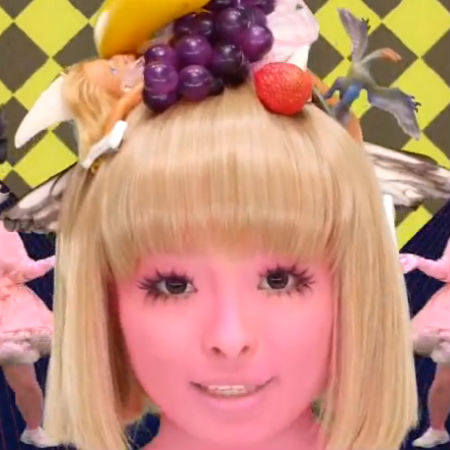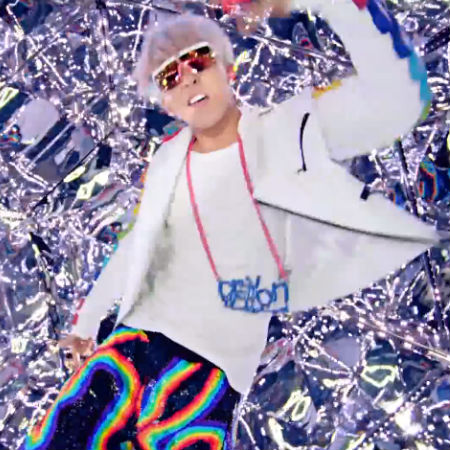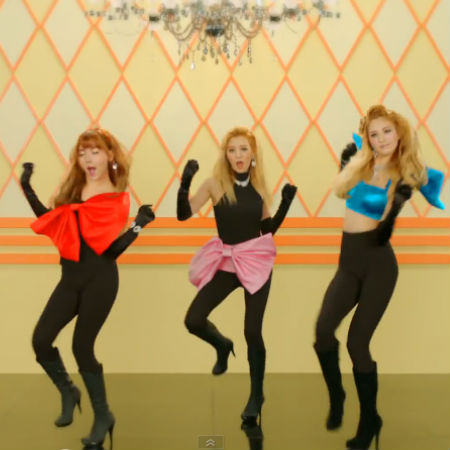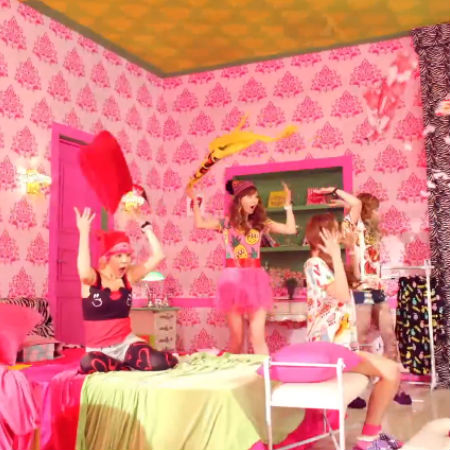
Something altogether unexpected happened to Western music charts in 2012 when Korean singer PSY‘s song “Gangnam Style”, a viral phenomenon on social media (he became the first Korean artist to top the iTunes Music Video Charts), shot to #1 in countries around the world, including most importantly the world’s biggest music market, the USA, where PSY was feted by the likes of Katy Perry and Tom Cruise online, and appeared on influential shows like NBC’s The Today Show and Saturday Night Live.
What was most remarkable about this veteran artist’s chart-topping feat, apart from the elaborate dance moves, sense of fun and a social commentary missing from much of modern Western pop music, was that it opened the eyes of music consumers to the existence of K-pop (short for Korean pop), which had been steadily advancing across the markets of Asia and Australia throughout the Noughties after originating with Seo Taiji and Boys in the 1990s.
Though PSY was an anomaly of sorts in K-pop as The Conversation noted in its excellent piece Explainer: What is K-pop and J-pop? in December 2013, in so far as he was “older, a solo artist and his music is more satirical than sentimental” (in contrast to the large ensemble boy and girl groups which typify K-pop), he nonetheless created an awareness of music originating from beyond the traditional realms of Europe, the UK and USA, educating fans on a style of pop music that favoured R&B, hip-hop, rock and techno, highly-choreographed dance moves, and cutting edge fashion.
What also defined it, much like the J-pop (Japanese pop) that had reigned supreme in Asia before it, was its eye-poppingly bright visual aesthetic, a look familiar to the viewers of Australian national broadcaster SBS’s Pop Asia program which since 2011 has been educating an eager Australian public on the virtues of this uniquely Asian, though Western-inspired, pop form.
It was the bubblegum bright visuals, along with the insistently bright and shiny melodies, that first attracted me to K-pop and J-pop when a writing friend of mine, who is possibly the most enthusiastic proponent of the genre I know, played me the music of Japanese artist Kyary Pamyu Pamyu, whom The Sydney Morning Herald declared a “‘Kawaii Ambassador’ (a diplomat for Japanese cuteness) [who] undercuts her image with dashes of creepiness and surrealism”, and K-pop artists like SHINee and the all-conquering phenomenon that is G-Dragon.
In celebration of this one-of-a-kind look, which mixes almost surreal cartoonish images with slick, polished choreography and gorgeous outfits, I’ve picked out five artists who I believe particularly personify the best of J-pop and K-pop’s visual style.
“PONPONPON” by Kyary Pamyu Pamyu

Kyary Pamyu Pamyu, a onetime habitue and star of Harujuku, Tokyo’s fashion mecca, which according to The Sydney Morning Herald mixes “mismatched styles and rainbow hues”, came to fame in 2011 when she teamed up with famed Japanese pop producer Yasutaka Nakata to parlay her growing online fame for her inventive fashion and love of wigs and false eyelashes into a successful pop career.
It makes sense that bright, effervescent visuals form one of the main planks of her appeal since she first came to the attention of the Japanese public because of “[the] street photographers working for Japanese fashion magazines, who started including snapshots of her in their publications”.
She is a much a visual artist as a musical one, a woman who strives to both maintain and constantly re-invent her look in much the same way that Lady Gaga and Nicki Minaj do, and her efforts to stay interesting and surprising have given her a singularly high profile among J-pop artists who aren’t afraid to mix the cute and the surreal if it will get them noticed, according to Jamaica dela Cruz, the host of SPop Asia (quoted in the Herald article):
“Everyone at SBS PopAsia loved the song, and the wacky clip. I just thought it was so weird … I’m a big Japanese pop culture fan, so I was used to it … [but] Kyary is in a league of her own.”
What particularly appealed to me was the insane dream-like quality of the “PopPonPon” clip.
Throwing in everything from riotously fun headgear to toy room props and floating brains and turtles, all of them liberally rendered in all the colours of the rainbow and the some, it matched the gleeful upbeat exuberance of the song to a tee, the perfect marriage of sound and visuals, and emblematic of Kyary Pamyu Pamyu’s endlessly attractive look which shows no sign of dipping into beige anytime soon.
“Crayon” by G-Dragon

G-Dragon, who was signed as an 8 year old to K-pop juggernaut record label S.M. Entertainment, is a phenomenon in Korean pop, a multi-faceted artist who is an industry unto himself.
He is a singer-songwriter, a rapper (he debuted as one of the two rappers in Korean group Big Bang), a producer and not surprisingly given the attention paid to him every time he steps out his front door, a model and fashion designer.
He is acutely conscious of the fact that he is a trendsetter in Korea, carefully choosing how he looks in both his music clips and at his public appearances, with changes in hairstyles, such as dying his hair blond and his choose of accessories – he started a trend for triangular scarves aka “Big Bang scarves” – igniting countrywide fashion manias.
He brings this innate sense of style to his music videos with one of his major hits “Crayon” exemplifying everything that makes G-Dragon such an appealing artist to watch.
The clip is chock full of playfully bright Teletubbies landscapes, cutting edge hip-hop fashion, and insanely colourful kaleidoscope backgrounds which mirror the unrelenting upbeat energy of the song, so expertly in fact that it is almost mandatory to watch G-Dragon’s videos as you listen to his songs.
“Lipstick” by Orange Caramel

The first offshoot or “unit group” of pop group After School – typically K-Pop groups swap members in and out, and or spin them off into new groups, much like TV shows often do; in this instance three of the youngest members of After School, Nana, Raina and Lizzy were chosen for the new grouping – Orange Caramel have taken the bright colours and sweetness of candy as their visual template, even naming their fan club “Candies”.
It’s evident in just about clip they make, with songs like “Lipstick”, taken off their first album released in September 2012, drenched in glowing pastel colours like orange, yellow and turquoise, quick cut scenes that match the upbeat pop stylings and a cute, sweet gee whiz style that suits the idea that these are three squeaky clean, utterly approachable young women.
So successful have they been in their own right that they are no longer considered a sub-unit of After School, proof that choosing a defining look and feel for the group, particularly one that trades in the rainbow shades and sugary sweetness of candy was the right move.
Quite apart from their delightfully upbeat songs, what makes them such a pleasure to watch is wondering what colours or delightfully over the top fashions will pop in their next song (witness “My Copycat” for the pink, most bouffant pink headgear you’ll see anywhere).
“Happiness” by Red Velvet

Another group from the seemingly endless roster of S. M. Entertainment, Red Velvet, comprised of Irene, Seulgi, Wendy and Joy, are brand spanking new, having just released their first single “Happiness” of August 1 this year.
While the song was a moderate success, what really attracted attention for the new group, all of them were members of the S.M. Rookies, a training ground for new signees who can train for pop stardom for anywhere between two and six years (meaning that committing to a K-pop career is a serious decision, not for the fainthearted or lacking in ambition), and not in a good way was the fact that the initial video clip for the song contained controversial images of the Hiroshima and Nagasaki bombings and 9/11, a fact quickly picked up by Japanese media.
Keenly aware that Japan is a major K-pop market and that this kind of controversy could kill Red Velvet off before it had had a chance to really fly, S.M. Entertainment moved quickly to edit out the offending images, acknowledging in a statement that they would pay closer attention to the material in their videos from this point on:
“After questioning the director, we found that he simply used a collage source for the images, and there was no intention behind it. As SM wasn’t able to catch it before, we will remove the material that caused the misunderstanding as soon as possible. We will make sure not to let this kind of thing happen in the future.” (source: allkpop)
The controversy aside, what really strikes you about the video, and you can only hope that S.M. will maintain this look for the group, is its surreal Alice in Wonderland vibe, a riot of wacky, almost drug-induced colourful images that move in and out of the screen in kaleidoscopic style.
It’s distinctive, bright, compelling and fresh and impossible to ignore, which is just want you want for a new emerging group.
“I Got a Boy” by Girls’ Generation

An eight-member group, comprised of Taeyeon, Sunny, Tiffany, Hyoyeon, Yuri, Sooyoung, Yoona and Seohyun – until yesterday they were a 9 member group; S.M. Entertainment announced that Jessica would be leaving the group amidst some controversy according to SBS Pop Asia – Girls Generation first gained popularity with the songs “Into the New World” and “Kissing You”.
Recording in English, Korean and Japanese – it is a standard part of K-pop artist training to learn multiple languages alongside dancing and singing lessons – they have continued to achieve success with “Gee” and “The Boys”, with sales numbering in the millions of albums.
They are a mega successful group in anyone’s language – they have been variously referred to as “The Nation’s Singers” and “The Nation’s Girls Group”, which gives you some idea why Jessica is more than a little upset to be leaving the group – and have consistently match their songs with a distinctive visual style which is reminiscent, at least in “I Got a Boy” of Kyaru Pamyu Pamyu’s gleefully colourful anarchic style.
The clip is all candy-coloured pinks and playroom pastels, as bubblegum cute and arrestingly noticeable as you could ask for, before morphing into Barbie-girl pretty hip-hop regalia.
The style again underlines the strong synchronicity between the songs and videos of many of the J-pop and K-pop artists, who possess formidable marketing teams who make sure that one look at the clip and you always know which artist is playing.
It may be orchestrated to within an inch of its life but it makes for wildly colourful, endlessly appealing visuals, one reason why Girls Generation and many of their musical compatriots are making such unmissable inroads around the world.